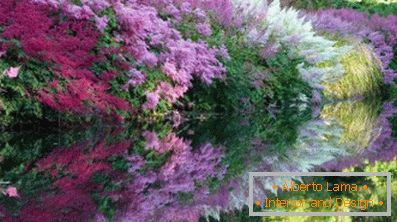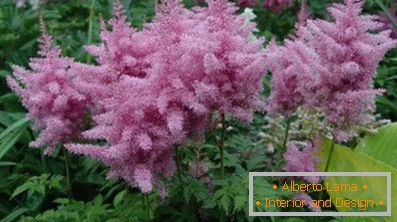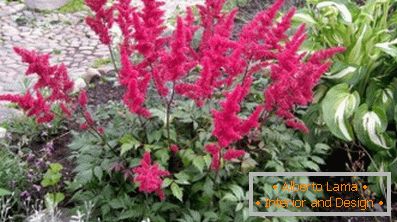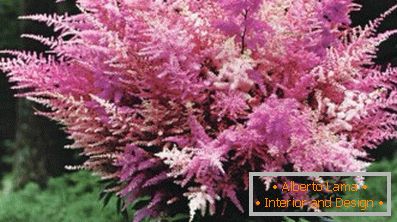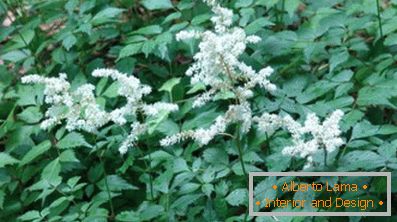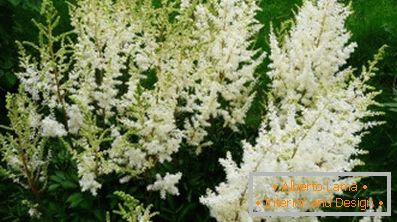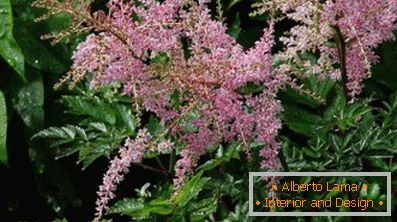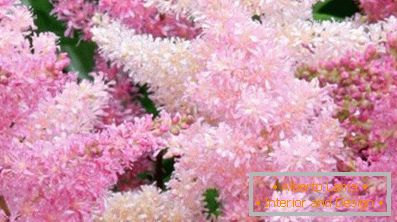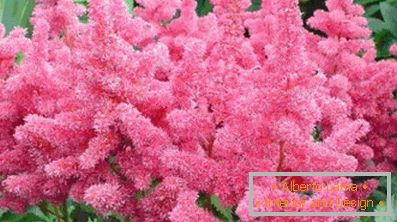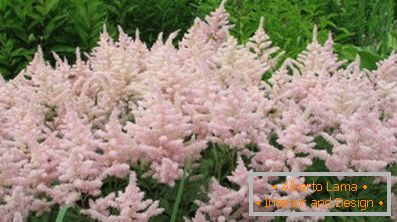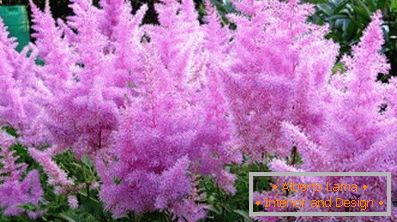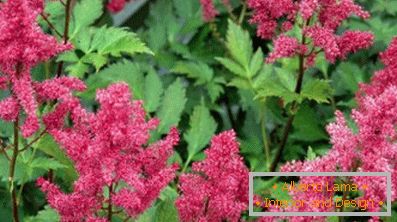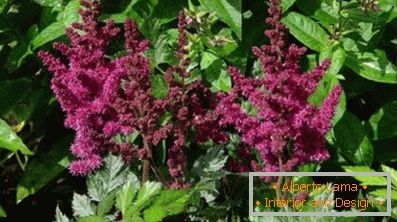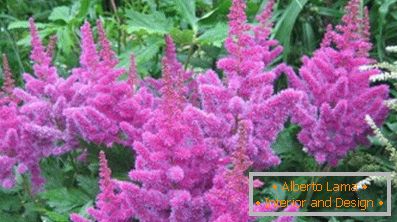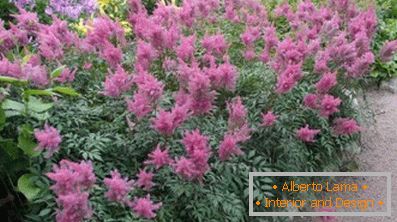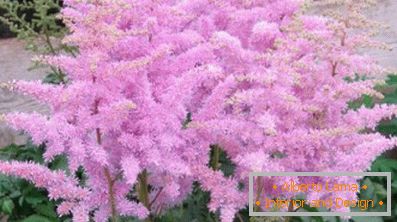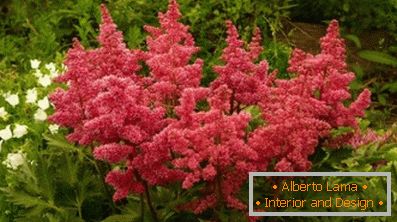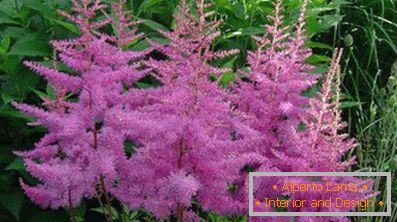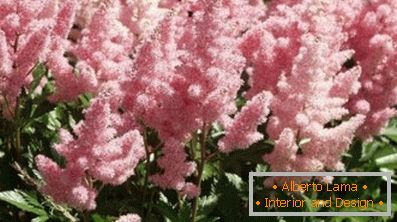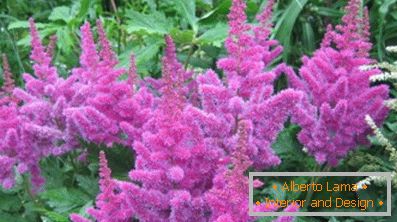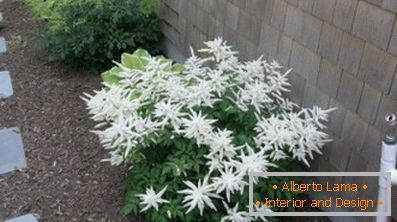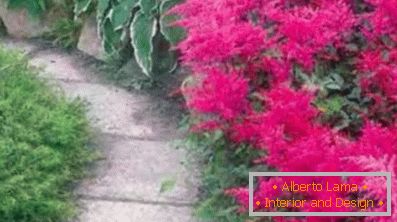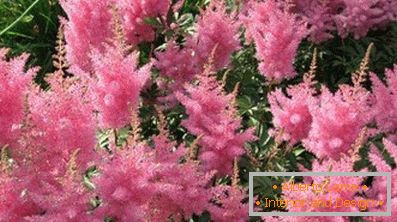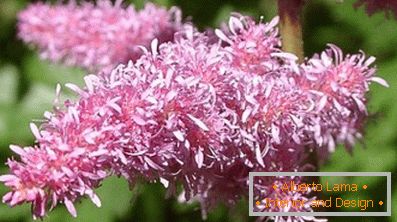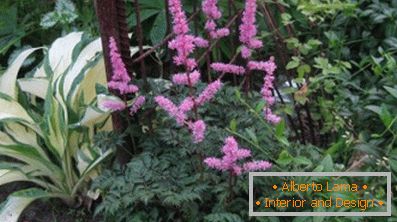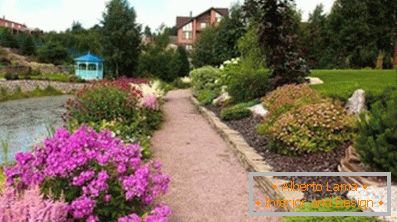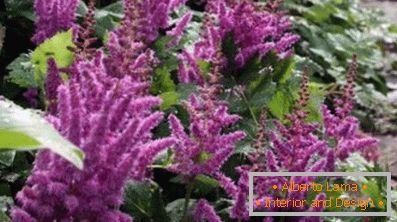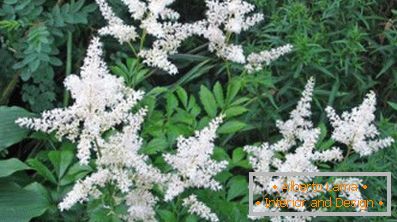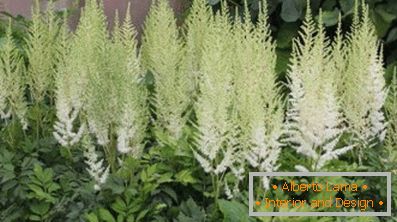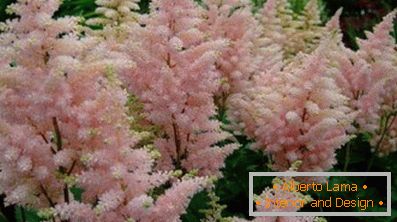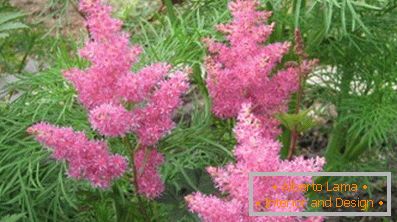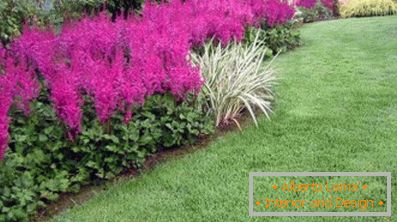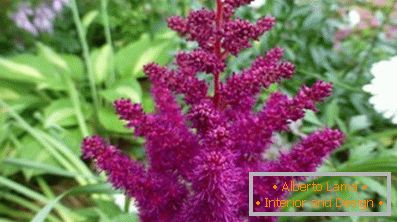More and more popular is Astilba, planting and care in the open ground for this plant is interested in an increasing number of people. And it is not surprising - a plant "without shine" (so you can translate its name) can be grown just for the sake of interest, and use it as a powerful "tool" in the design of the landscape design of the land. Astilba can fill the dark corners of the garden, become an ornament of the shore of the reservoir or complement a bouquet of a cozy flowerbed. Planting and caring for her does not require special skills from a person, and this is another plus to growing her at home.

Delicate flowers of astilby bright pink color.
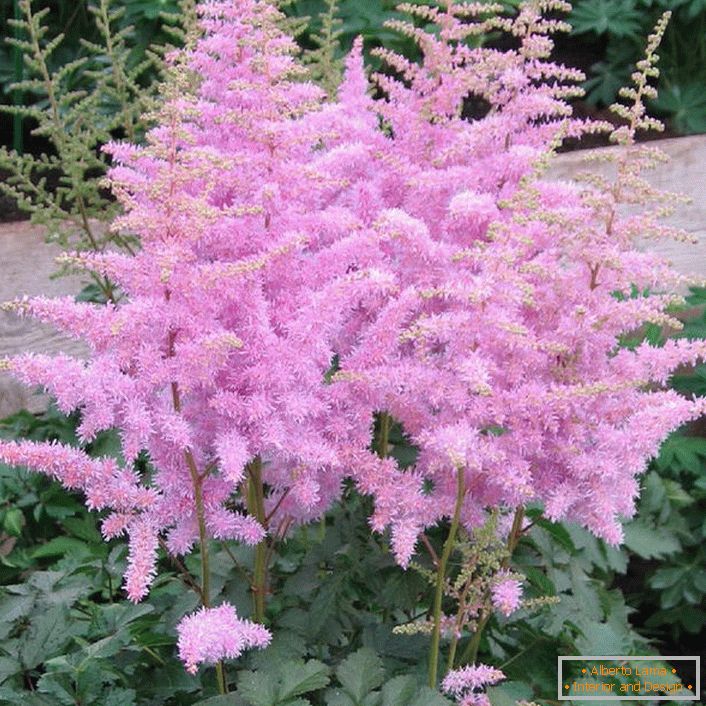
Light-violet inflorescences will become an original ornament of any front garden.

Snow-white flowers in the garden near the house.
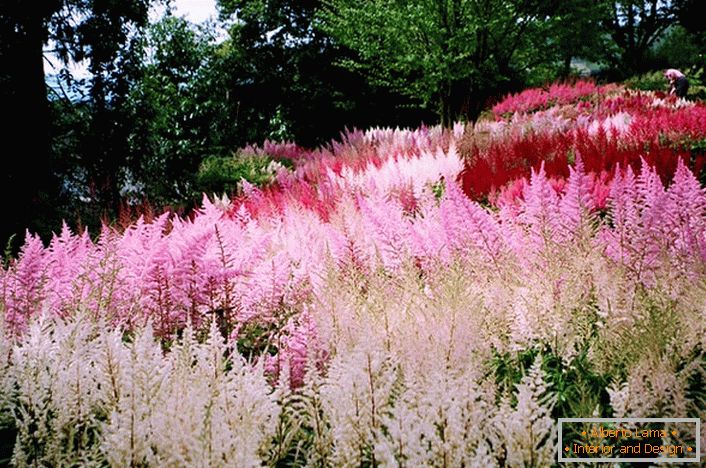
A luxurious backyard. Inflorescences of white, pink and bright crimson blend harmoniously in the overall picture of landscape design.
In this article, read:
- 1 A bit about the plant
- 2 Astilba on the house plot
- 3 Reproduction methods
- 4 Location and soil selection
- 5 Best time for planting, care, watering
- 6 Crop and transplant
- 7 Astilba is the magic of tenderness in your garden. Video
- 8 Astilba in the suburban area
A little about the plant
Astilba is a genus of perennial plants, which includes a large number of plant species. The birthplace of Astilba can be considered East Asia. In addition, some flower varieties in the wild grow in Japan and North America. Even in Russia there are 2 species on the island of Kunashir.
The height of plants varies greatly: from 10 to 200 cm. Because of this, Astilba is divided into dwarf (up to 30 cm), low (about 50 cm), medium (up to 1 m) and high (above 1 m.) Variety. Still plants are divided in the form of inflorescences:
- The paniculate. Branch off from the main trunk go up and shorten to the apex. An example is Astilba Arendsa.
- Pyramidal. The shoots of the trunk are almost perpendicular (view Mont Blanc).
- The drooping. Because of the length and flexibility of the trunk, the trunks are inclined to the ground. Sorts of Lemoan and Thunberg.
- Diamond-shaped. Named so, thanks to the shape of the inflorescence. An example is the species of Japanese Astilbe.
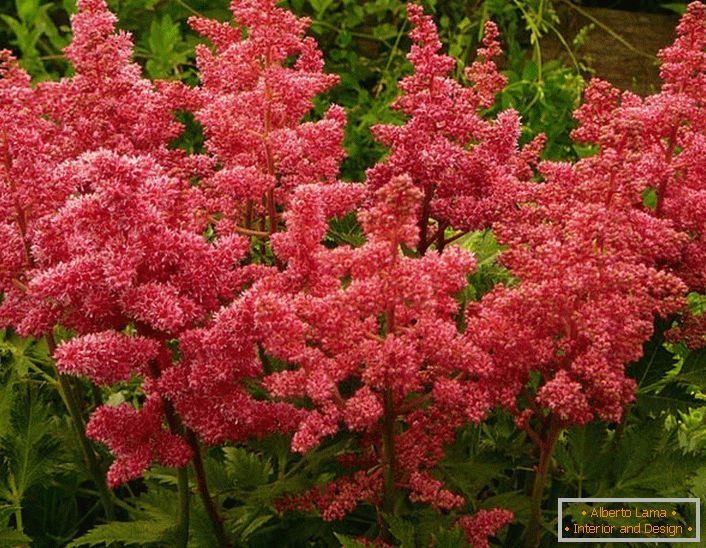
Contrast flowers. The flower is popular among modern gardeners, thanks to lush inflorescences.
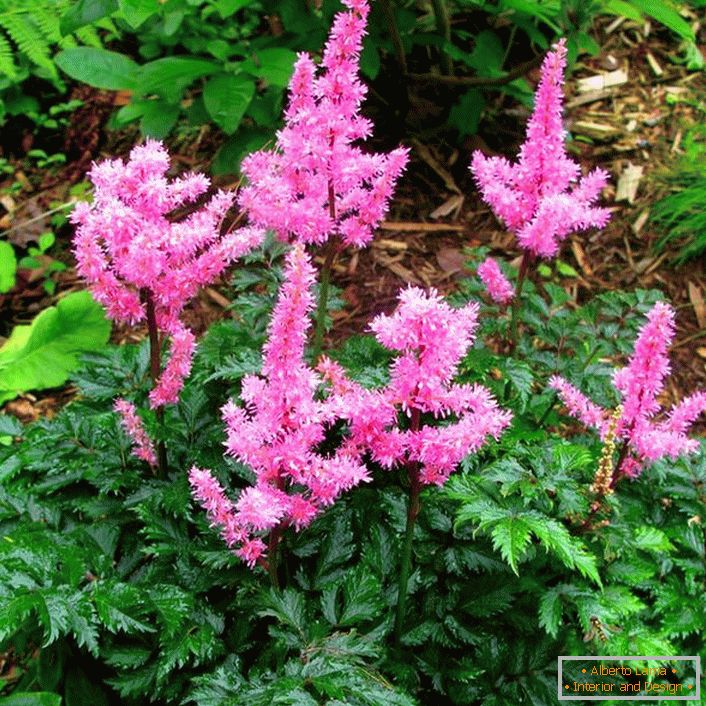
Pink flowers of blossoming astilba.
This genus of plants is characterized by lush flowering, which lasts almost all summer. Astilba's flowers have small, different colors, they are collected in inflorescences, reminiscent of panicles of different lengths. There is Astilba white, lilac, red, pink.
Most of these plants like shaded and damp places. Wild species, for example, can be found in broad-leaved forests, fens, or along the banks of water bodies. Astilba is feeling well in the cold weather.
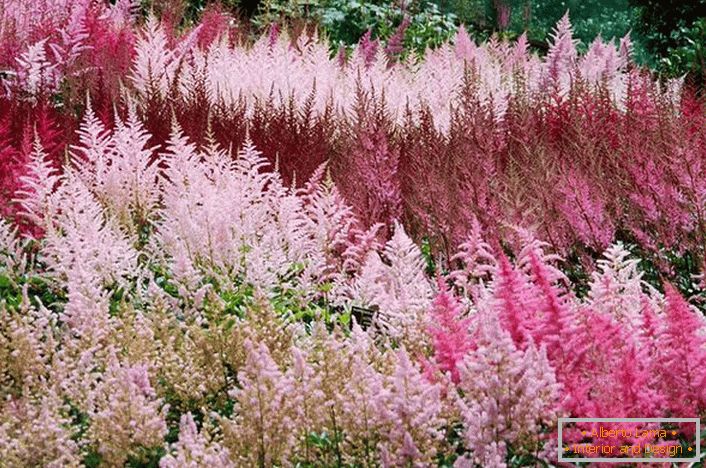
Astilba of different colors is a stylish ornament for the garden. Bright and faded colors perfectly match.
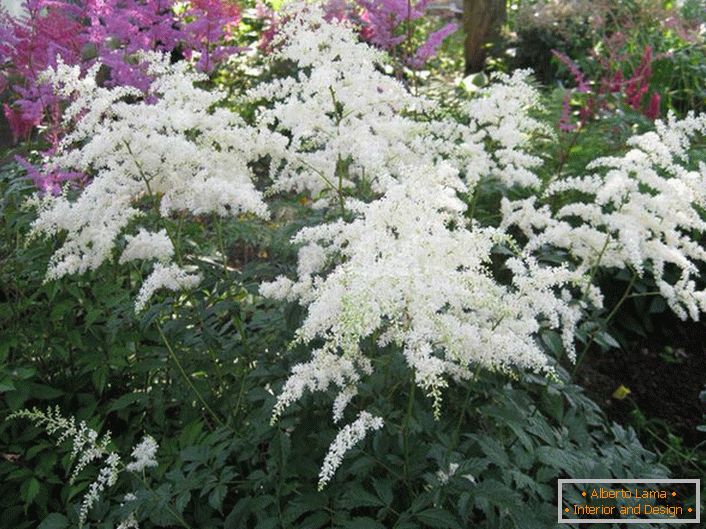
White astilby near the house.

Lush well-groomed inflorescences.
Astilba on the home plot
Deciding to plant Astilbu in his area, it becomes possible to decorate it in a variety of styles - a huge number of flower species allows it to be combined with a variety of other plants.
You can plant Astilba with conifers, for example, plant white plants, diluting the background of a green carpet. If there are ponds or swamps on the site, Astilba will feel great near them. Successfully the flower will be combined in the garden or in the presence of a flower bed with tulips, iris, fern, bells, grapes.
Before planting plants on the open ground it is necessary to know its characteristics and proceed from them to determine the place: it will be a flower bed, a garden or some other place. Prepare the soil, choose the right time and prepare seedlings. Only after this you can get down to business.
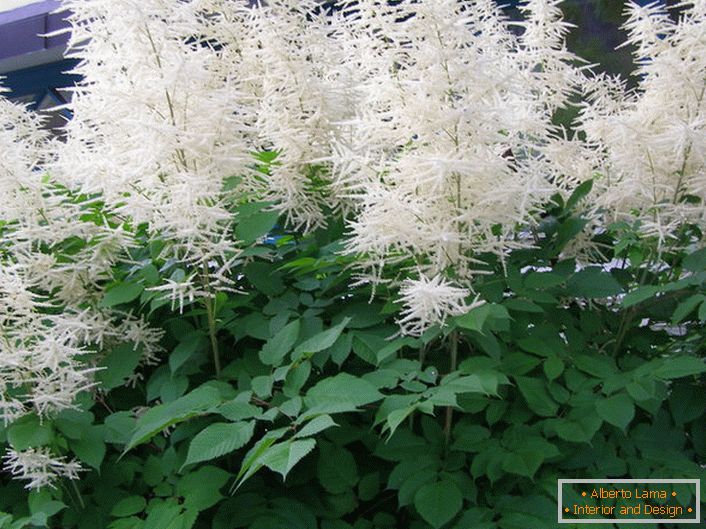
Snow white under the window will please the owner of the house and his guests.
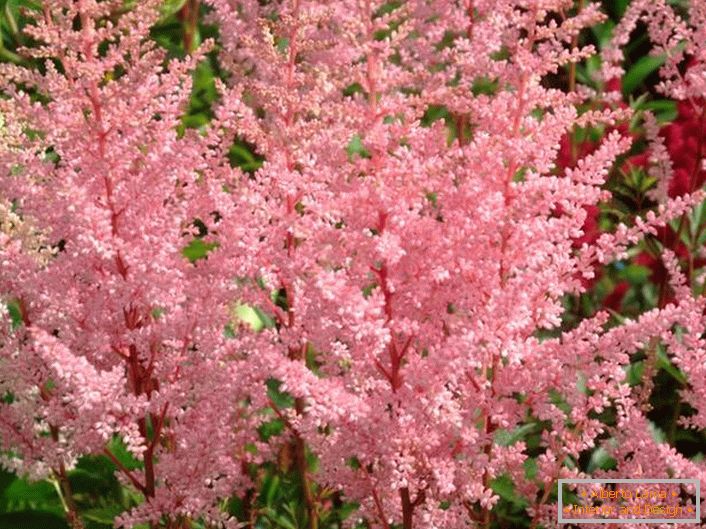
Pink flowers of an astilde on long branches.
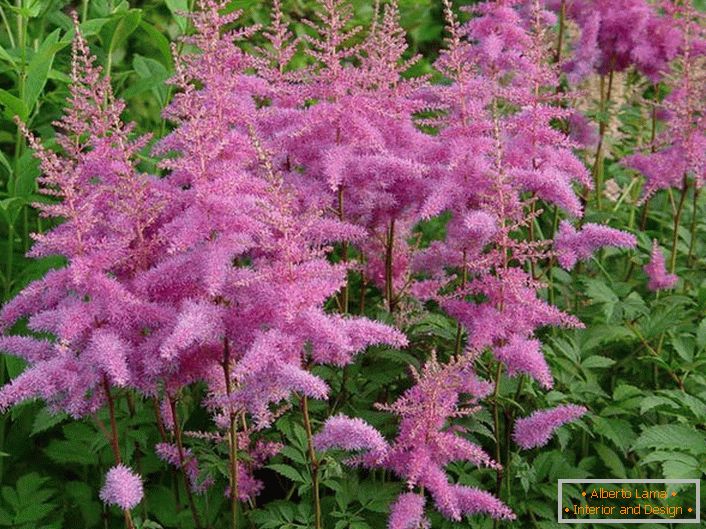
Bright-violet voluminous inflorescences.
Methods of reproduction
Astilba can reproduce in three ways:
- Seeds. Before planting in the open ground, seeds are germinated in containers, previously subjected to stratification. In most cases, this way plants are grown for breeding.
- By budding - a faster and easier option. In spring, when bushes grow actively, young shoots cut off with a small part of the root. The cut is sprinkled with ashes for healing and shoots are planted in a place fertilized with peat with gravel. In the autumn, seedlings can be transplanted.
- Fission of bushes. The bush is divided into several parts of 3-5 kidneys, first cutting off the leaves. Then the seedlings are planted on the flower beds in a quarter of a meter and watered every day until the plant is rooted.

Composition of twigs of astilba in different colors.

Astilba is planted along the garden path.
Choice of location and soil
An ideal place for Astilbe to land on the open ground will be a site with a rarefied shadow and moist soil. The bush does not need a lot of light. If it is planted in a sunny place, it will be necessary to water it regularly and in addition it will be important to cover the surface of the earth with pebbles, straw, bark, etc., in order to preserve the looseness and moisture of the soil as best as possible. It is worth taking into consideration that in the sun the flowers of Astilba will not be kept for a long time, and the leaves will begin to turn yellow and dry at the edges.
Before planting the soil is necessary:
- dig up;
- remove debris and other plants;
- fertilize.
The most suitable soil is a fertile, humus-rich soil. An important point is the sufficient content of nitrogen, potassium and phosphorus in it. Therefore, probably, before the landing of Astilba, it will be necessary to purchase mineral fertilizers.

Not yet blossoming is an astilbe of bright pink color.

Astilba in the garden.

Light lilac astilba is the highlight of any garden.
The best time for planting, care, watering
You can transplant Astilba at almost any time of growth, but after this 2-3 weeks they should be watered.
Planting and caring for Astilba do not cause much trouble. However, in order to grow a healthy and beautiful plant, you still need to observe some rules for caring for it. This applies to soil cultivation after planting, watering, pruning and transplanting.
Astilba is a moisture-loving plant, this should not be forgotten, especially if bushes are planted in dry ground. It is often necessary and abundant to water the areas where it grows, in addition, it will not be superfluous to mulch the soil.
For a good development of plants it is worthwhile to carry out periodic fertilizing. The best period for this is from May to August. Fertilizers are applied 3 times:
- complex (preferably in a liquid form, so as not to cause a burn of the base of the stems);
- for flowering plants, during flowering;
- Mineral or organic top dressing for better wintering.
In autumn, the soil around the bush is sprinkled with ashes for the sake of better flowering next year.
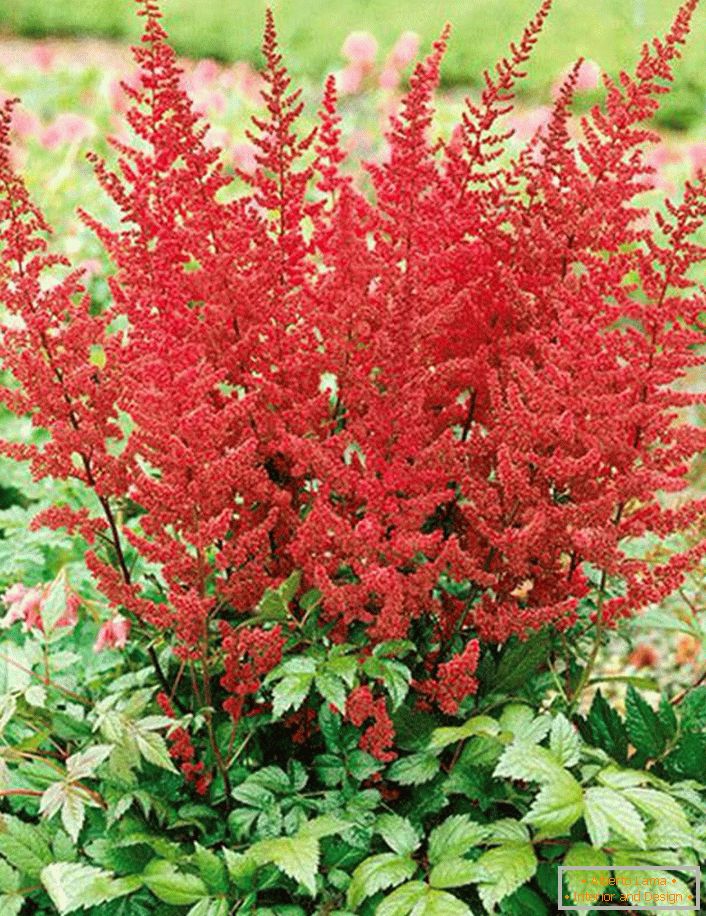
Bright astilba blends well with other colors.
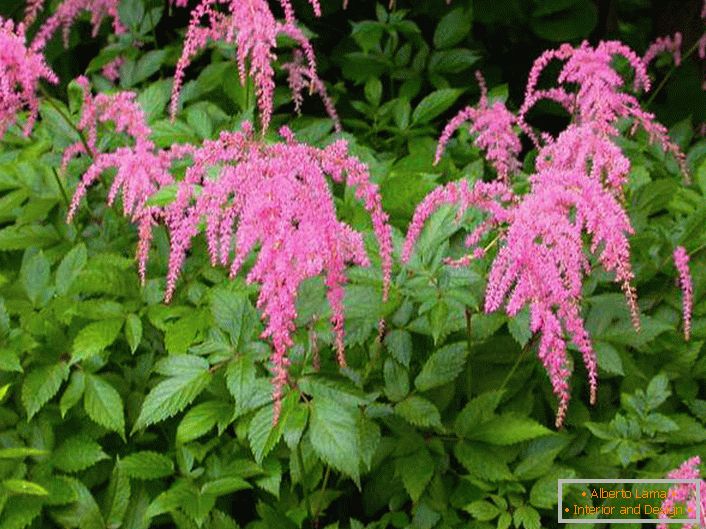
Pink astilba with flowing inflorescences.
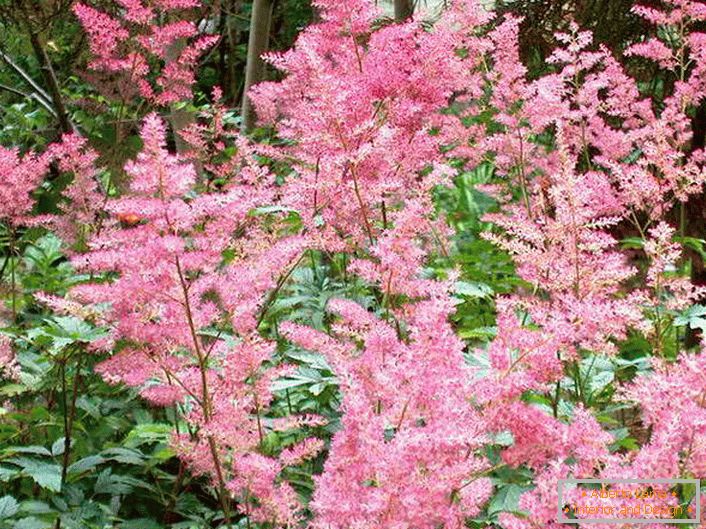
Delicate astilba flowers for decorating the infield.
Crop and transplant
Pruning Astilbe is carried out in several stages. When the bush fades, pruned inflorescences are pruned and the seeds collected, if they are needed later. The second stage occurs late autumn or spring before the appearance of young shoots.
Although Astilba and perennial plant, its terrestrial part to winter still dies, so it can also be cut off.
Astilba can grow up to 10 years without transplantation. However, that the bush every year was lush and well bloomed, plant transplantation should be done every 3-4 years. The reason for this - the aging of the rhizome. Another reason is the peculiarity of the Astilba rhizome to accrue upwards, so that for a couple of years it is above the ground and becomes vulnerable from the sun in summer or frost in winter. Therefore, every few years: in autumn or early spring, plants are excavated and divided into parts. After that, the transplant begins:
- dig a hole, mineral fertilizers are added to it and watered, after it is absorbed, the plant is planted;
- To fill the voids between the root and the ground, the soil is compacted;
- regardless of the soil moisture, the plants are watered again, and after a couple of days they begin to grow.

An example of properly manicured astilba.
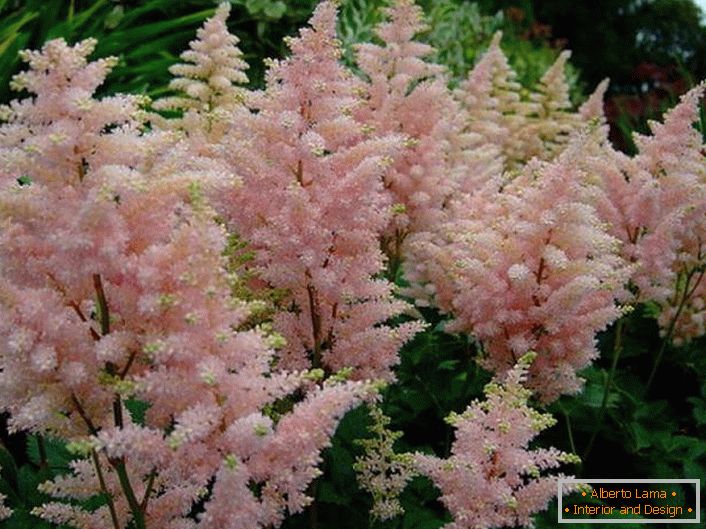
Pale pink astilba is an elegant flower. Delicate buds contrast with the green background.

Crimson buds of astilba.
Pursuing a garden, many people want to make it not only beautiful, but also, if possible, pick plants that will look spectacular and will be undemanding to care. Astilbs can not be better suited for this, because planting and care in the open ground behind them is very simple.

